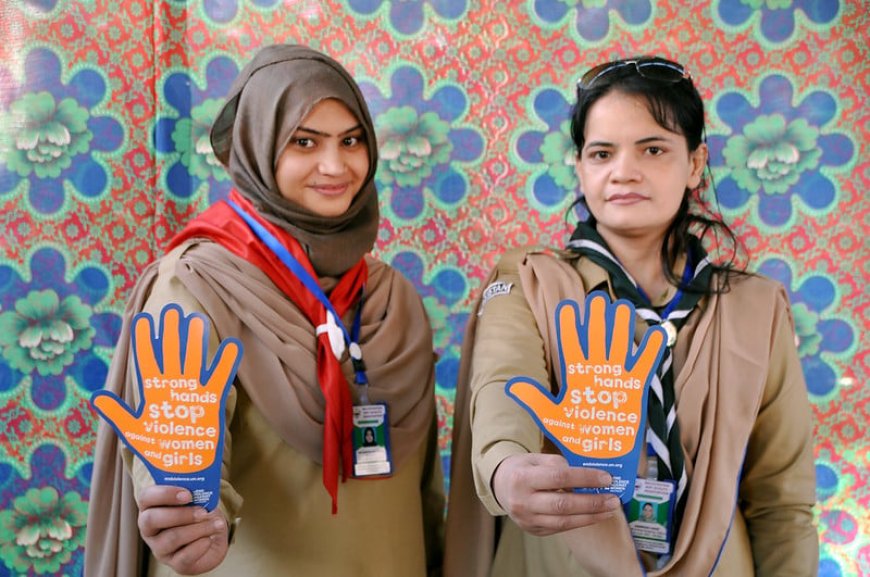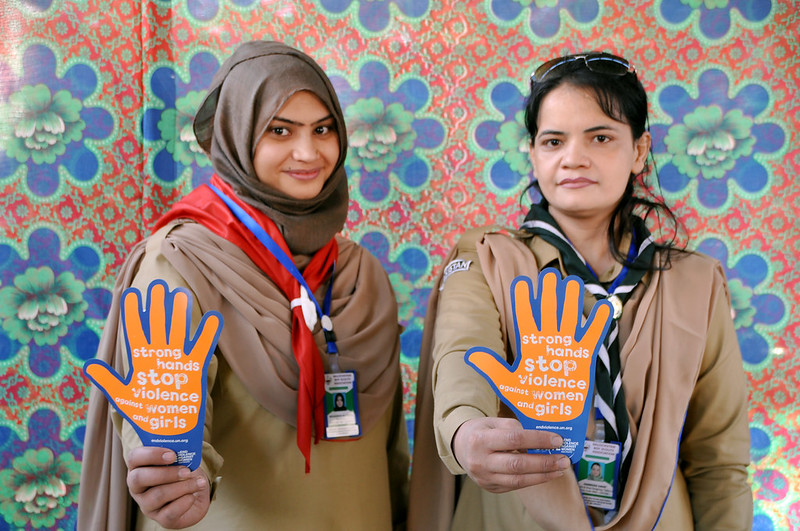Childhood Trauma and Stressful Life Events Linked to Depression in Pakistani Women
Childhood Trauma and Stressful Life Events Linked to Depression in ... Mad in America

Study Links Childhood Trauma, Stressful Life Events, and Depression in Pakistani Women
A study published in the Journal of Affective Disorders has found a correlation between childhood trauma, stressful life events, and depression in Pakistani women. The authors of the study also highlight the importance of conscientiousness, extraversion, and perceived social support as protective factors against major depressive disorder (MDD).
Sustainable Development Goals (SDGs)
- Goal 3: Good Health and Well-being
- Goal 5: Gender Equality
- Goal 10: Reduced Inequalities
- Goal 16: Peace, Justice, and Strong Institutions
Prevalence of MDD and Childhood Trauma in Pakistani Women
The study reveals that both MDD and childhood trauma are highly prevalent among Pakistani women. The authors state:
“MDD and a history of childhood trauma were highly prevalent in Pakistani women attending general medical clinics. Interventions to prevent childhood trauma and enhance social support for women could enhance public mental health in LMICs like Pakistan.”

Balochistan Girl Scouts Nosheen and Ambreen say, ‘Strong hands stop violence against women and girls.’
Photo: UN Women/Henriette Bjoerge
Research Methodology
The study involved 455 women from general outpatient medical clinics in Pakistan. The researchers examined the relationship between MDD, childhood trauma, and personality traits among these participants.
To be eligible for the study, participants had to be between 18 and 65 years old and capable of giving informed consent. Women with learning disabilities, schizophrenia spectrum disorders, psychotic symptoms, substance abuse disorders, severe chronic medical conditions, or prior head injuries resulting in loss of consciousness or neurological complications were excluded.
The researchers conducted structured clinical interviews to diagnose DSM-IV conditions. They used the self-report questionnaire (SRQ-20) to assess psychological distress, the childhood trauma questionnaire (CTQ) to evaluate childhood trauma, and the NEO personality inventory revised (NEO PI-R) to measure personality traits. Additionally, participants completed the life event questionnaire (LEQ) to identify stressful life events and the multidimensional scale of perceived social support (MSPSS) to assess social support levels.
Findings of the Study
Out of the 455 participants, 246 (54%) tested positive for MDD. The average age of those with depression was 36.27, while the average age of those without depression was 33.24. Depressed women were more likely to be married (74%), separated or divorced (8.1%), or widowed (8.5%) compared to non-depressed women.
Women diagnosed with MDD reported higher levels of childhood trauma across all categories. For example, 5.7% of the depressed group reported experiencing emotional abuse during childhood, compared to 4.3% of the non-depressed group.
Furthermore, 76.8% of depressed women experienced emotional neglect, while only 65.2% of non-depressed women reported the same. The numbers for physical abuse, physical neglect, and sexual abuse in childhood were also higher among those diagnosed with MDD.
Depressed women perceived significantly lower levels of social support from friends, family, and others compared to their non-depressed peers. Women with MDD also reported a higher number of stressful life events.
The study found that women with high scores in conscientiousness and extraversion were less likely to test positive for MDD. Separated or divorced women had a threefold increased risk of depression compared to married or single women, making them the subgroup with the highest likelihood of depression.
The researchers noted that a 10-unit difference in the MSPSS score corresponded to a 30% lower chance of depression. Similarly, a 10-unit increase in extraversion and conscientiousness scores reduced the risk of depression by approximately 30%. On the other hand, each single-unit increase in the stressful life events score indicated a 20% higher chance of being diagnosed with depression. A 10-unit increase in the childhood trauma score resulted in a 45% increased likelihood of an MDD diagnosis.
Limitations and Implications
The study acknowledged two main limitations: reliance on participants’ memory, which could lead to data inaccuracies, and the lack of data on participants’ current physical health, which could have influenced the measurements. Additionally, since the data only pertains to Pakistani women, its generalizability to other groups is limited. The authors conclude:
“The high prevalence of childhood trauma and MDD in Pakistani women attending general medical clinics underscores the importance of an integrated approach to identifying and treating depressive symptoms in LMIC settings. Such strategies might elevate both physical and mental health outcomes for female patients.”
Discussion on Global Mental Health
Prior research has indicated that
SDGs, Targets, and Indicators Analysis
1. Which SDGs are addressed or connected to the issues highlighted in the article?
- SDG 3: Good Health and Well-being
- SDG 5: Gender Equality
- SDG 10: Reduced Inequalities
The article discusses the prevalence of major depressive disorder (MDD) and childhood trauma among Pakistani women. It also highlights the importance of social support and interventions to enhance mental health in low and middle-income countries (LMICs) like Pakistan. These issues are directly connected to SDG 3, which aims to ensure healthy lives and promote well-being for all at all ages. Additionally, the article addresses gender inequality in mental health outcomes, which is relevant to SDG 5. Lastly, the article emphasizes the need for interventions to reduce inequalities in mental health outcomes in LMICs, aligning with SDG 10.
2. What specific targets under those SDGs can be identified based on the article’s content?
- Target 3.4: By 2030, reduce by one-third premature mortality from non-communicable diseases through prevention and treatment and promote mental health and well-being.
- Target 5.1: End all forms of discrimination against all women and girls everywhere.
- Target 10.2: By 2030, empower and promote the social, economic, and political inclusion of all, irrespective of age, sex, disability, race, ethnicity, origin, religion or economic or other status.
The article’s content aligns with Target 3.4 of SDG 3, as it emphasizes the need to prevent and treat mental health disorders like major depressive disorder (MDD) and promote mental well-being. It also addresses Target 5.1 of SDG 5 by highlighting the gender disparities in mental health outcomes among Pakistani women. Furthermore, the article relates to Target 10.2 of SDG 10 by emphasizing the importance of social support and inclusive interventions to reduce inequalities in mental health outcomes.
3. Are there any indicators mentioned or implied in the article that can be used to measure progress towards the identified targets?
- Indicator 3.4.1: Mortality rate attributed to cardiovascular disease, cancer, diabetes, or chronic respiratory disease.
- Indicator 5.1.1: Whether or not legal frameworks are in place to promote, enforce, and monitor equality and non-discrimination on the basis of sex.
- Indicator 10.2.1: Proportion of people living below 50 percent of median income, by age, sex, and persons with disabilities.
The article does not explicitly mention specific indicators related to the identified targets. However, Indicator 3.4.1 of SDG 3 can be relevant to measure progress in reducing premature mortality from non-communicable diseases, including mental health disorders like MDD. Indicator 5.1.1 of SDG 5 can be used to assess progress in promoting and enforcing gender equality and non-discrimination in mental health services. Indicator 10.2.1 of SDG 10 can help measure progress in reducing income inequalities and social inclusion in mental health outcomes.
SDGs, Targets, and Indicators Table
| SDGs | Targets | Indicators |
|---|---|---|
| SDG 3: Good Health and Well-being | Target 3.4: By 2030, reduce by one-third premature mortality from non-communicable diseases through prevention and treatment and promote mental health and well-being. | Indicator 3.4.1: Mortality rate attributed to cardiovascular disease, cancer, diabetes, or chronic respiratory disease. |
| SDG 5: Gender Equality | Target 5.1: End all forms of discrimination against all women and girls everywhere. | Indicator 5.1.1: Whether or not legal frameworks are in place to promote, enforce, and monitor equality and non-discrimination on the basis of sex. |
| SDG 10: Reduced Inequalities | Target 10.2: By 2030, empower and promote the social, economic, and political inclusion of all, irrespective of age, sex, disability, race, ethnicity, origin, religion or economic or other status. | Indicator 10.2.1: Proportion of people living below 50 percent of median income, by age, sex, and persons with disabilities. |
Behold! This splendid article springs forth from the wellspring of knowledge, shaped by a wondrous proprietary AI technology that delved into a vast ocean of data, illuminating the path towards the Sustainable Development Goals. Remember that all rights are reserved by SDG Investors LLC, empowering us to champion progress together.
Source: madinamerica.com

Join us, as fellow seekers of change, on a transformative journey at https://sdgtalks.ai/welcome, where you can become a member and actively contribute to shaping a brighter future.







